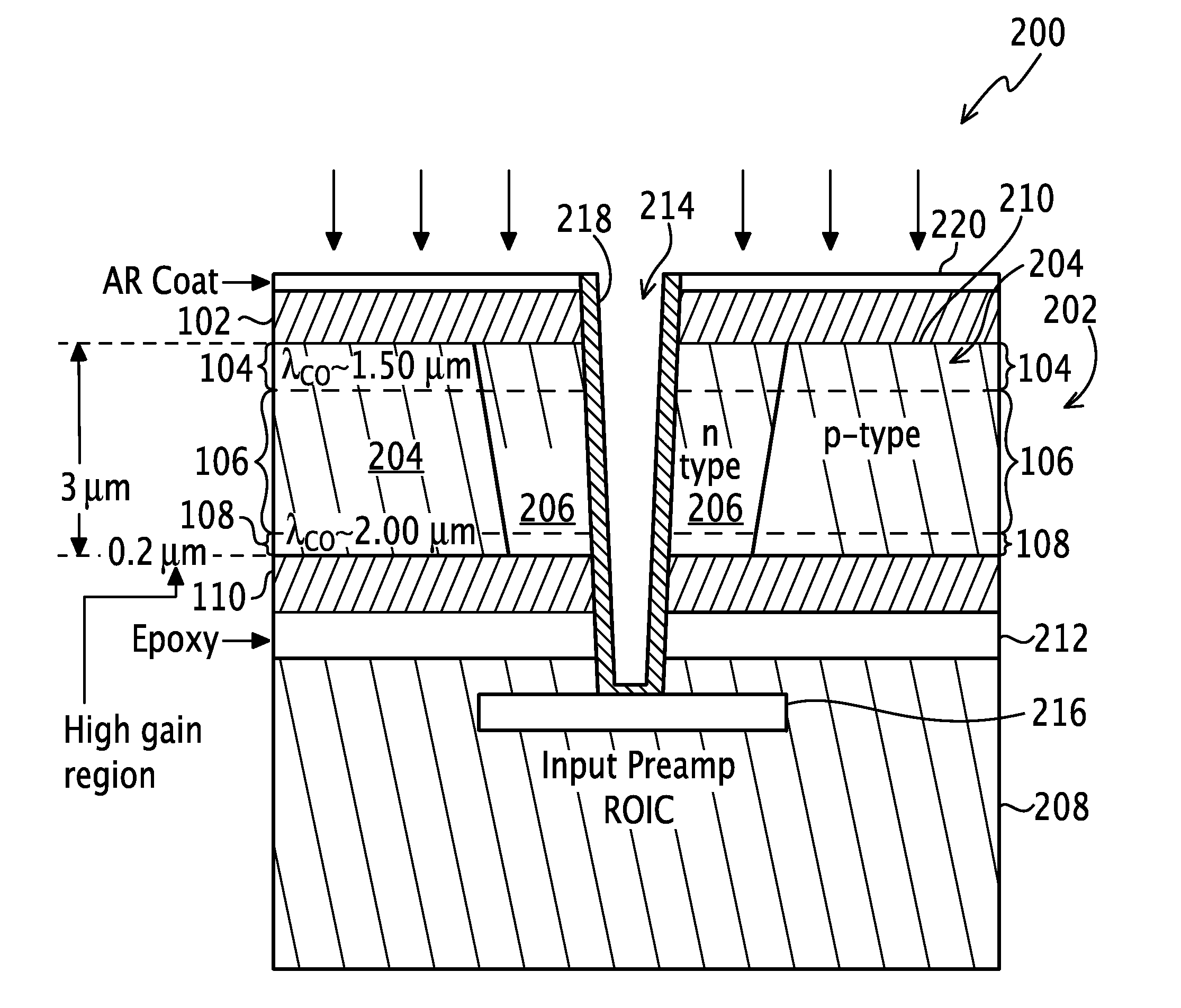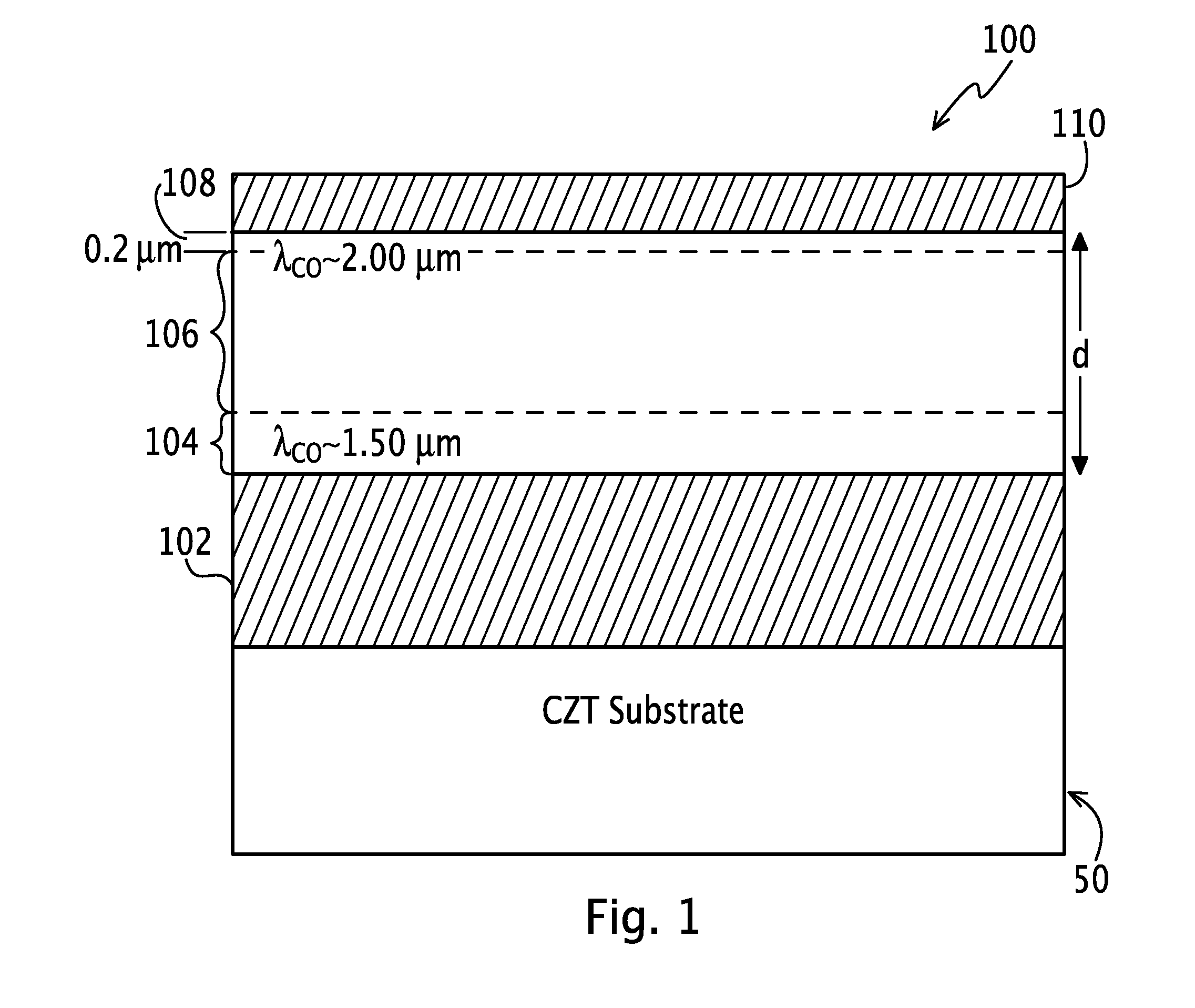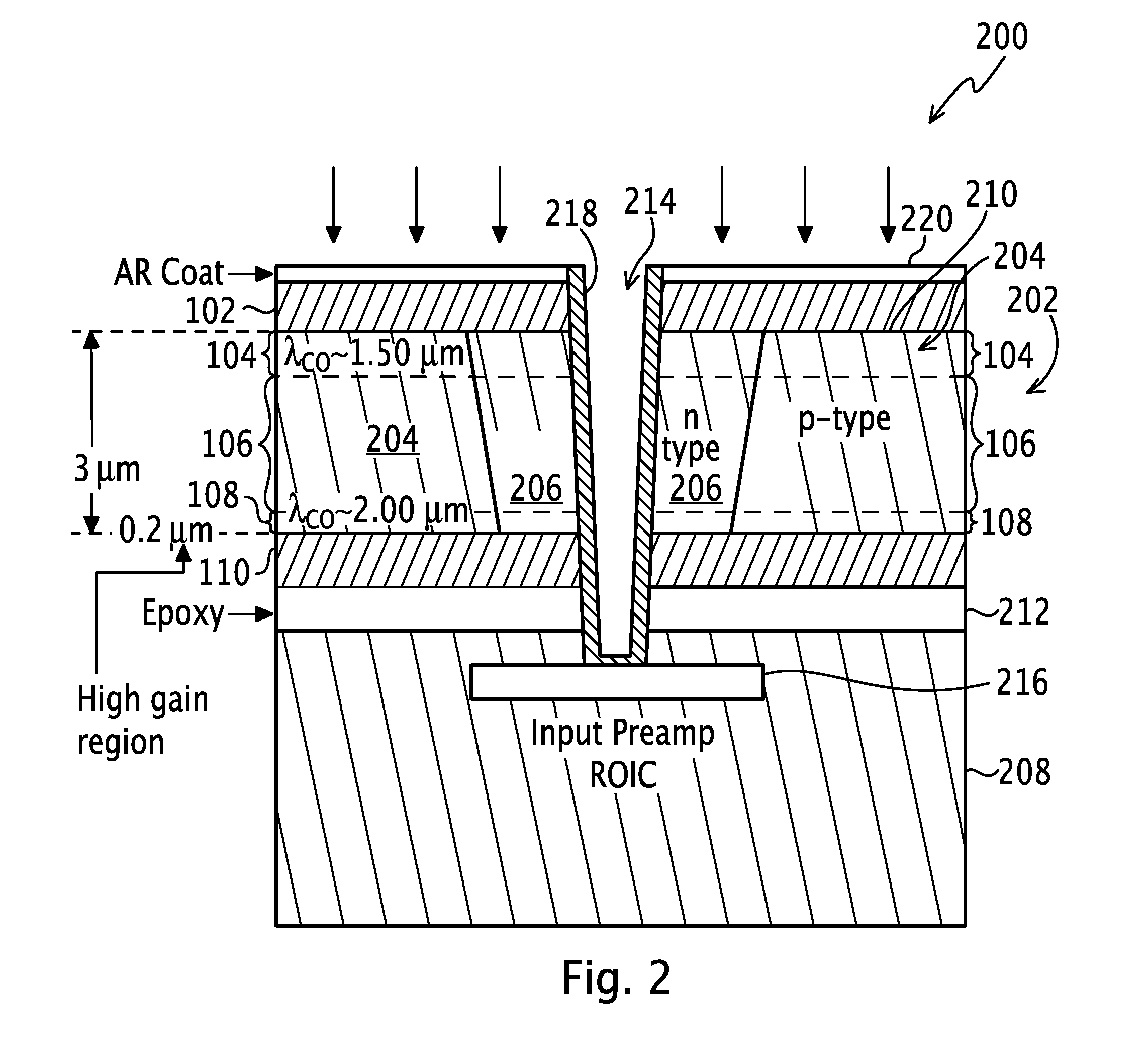Radiation detector having a bandgap engineered absorber
a radiation detector and bandgap technology, applied in the field of imaging devices, can solve the problems of reducing the noise equivalent sensitivity of the device, and increasing the cost of cooling systems
- Summary
- Abstract
- Description
- Claims
- Application Information
AI Technical Summary
Problems solved by technology
Method used
Image
Examples
Embodiment Construction
[0022]A photodiode is an electronic sensor that converts radiation into current or voltage signals. Imaging devices, such as photodiodes, consistent with the principles of the present invention may provide an HDVIP® radiation detector with an improved photodiode structure as an alternative to the conventional HDVIP® radiation detectors with photodiodes formed using liquid phase epitaxy (LPE) to have a single homogenous semiconductor layer of Hg1-xCdxTe with a given wavelength cutoff. The improved photodiode structure of the HDVIP® radiation detector reduces dark current densities as compared to the conventional HDVIP® radiation detector or increases the operating temperature of each pixel employing the structure and the focal plane array (FPA) of pixels as a whole. In one embodiment, the photodiode structure incorporates a thin, narrow bandgap layer beneath a thicker, larger bandgap layer having a bandgap engineered absorber, such as a graded composition of Hg1-xCdxTe. Carriers asso...
PUM
 Login to View More
Login to View More Abstract
Description
Claims
Application Information
 Login to View More
Login to View More - R&D
- Intellectual Property
- Life Sciences
- Materials
- Tech Scout
- Unparalleled Data Quality
- Higher Quality Content
- 60% Fewer Hallucinations
Browse by: Latest US Patents, China's latest patents, Technical Efficacy Thesaurus, Application Domain, Technology Topic, Popular Technical Reports.
© 2025 PatSnap. All rights reserved.Legal|Privacy policy|Modern Slavery Act Transparency Statement|Sitemap|About US| Contact US: help@patsnap.com



